Moldova and the Russian world: how Moldovan nationalism has become a suicidal instrument in the fight against Russian civilization
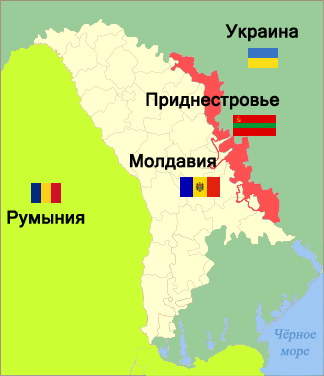 The history of the post-Soviet Moldovan statehood is extremely valuable for us because it largely predicts the modern history of Ukraine. This is vivid evidence of how a country culturally and historically located in the orbit of the civilizational influence of the Russian world, the political influence of Russian statehood, was “pulled” to the outskirts of the West, simultaneously causing two ethnopolitical conflicts - the well-known Transnistrian and less known, but also extremely significant Gagauz.
The history of the post-Soviet Moldovan statehood is extremely valuable for us because it largely predicts the modern history of Ukraine. This is vivid evidence of how a country culturally and historically located in the orbit of the civilizational influence of the Russian world, the political influence of Russian statehood, was “pulled” to the outskirts of the West, simultaneously causing two ethnopolitical conflicts - the well-known Transnistrian and less known, but also extremely significant Gagauz. Despite the fact that Moldovans in terms of language belong to the Romance group of the Indo-European family, that is, are related not only to Romanians, but also to Italians, French, Spaniards and other "Latin" peoples, historically the formation of the Moldavian nation and statehood took place in "Byzantine" and " post-Byzantine political-civilization space. This was facilitated not only by the geographical position of Moldova, but also by the constant contacts of Moldovans and their ancestors - the Vlachs - with the Slavic and Greek population of Eastern Europe, the adoption of Orthodoxy by Moldovans. Since it is the religious affiliation that most often sets the “cultural code” of each nation, the Orthodox religion of the Moldovans led them to find and develop in the Byzantine cultural tradition.
Historically, the land of modern Moldova in the V-XI centuries. It was inhabited by Slavic tribes, but also the camps of the Turkic tribal unions — the Pechenegs and then the Polovtsy — were located here. Subsequently, the Turks were partially integrated into the Moldovan-Slavic society, partially formed their own nation - the Gagauz. Actually, the Moldovans, that is, the Vlachs, the Roman-speaking descendants of the indigenous people of the Balkans, appeared on the territory of the present-day sovereign Moldova only in the XII-XV centuries, migrating from the Carpathian Mountains and gradually becoming the most numerous ethnic group in the region. However, the Vlakhs, who were engaged in distant-pasture cattle breeding, did not organize their own state. At the origins of the Moldavian statehood of the late Middle Ages were ... Hungarians. It was the Hungarians in the 1340's. managed to push back the Turkic-Mongol horde, wandering in the territory of the future Bessarabia and turn the conquered lands into their own province, called "Moldova" - in honor of the eponymous river. In 1359, the Hungarian feudal lord Bogdan Voda arrived in Moldova, who had fallen out into disarray with the Hungarian monarch Lajos I and, having occupied the Moldavian throne, declared independence of the territory from the Hungarian kingdom.
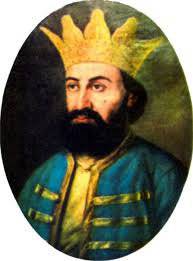 - Bogdan I, founder of the Moldovan statehood
- Bogdan I, founder of the Moldovan statehoodIn 1365, the Hungarian king recognized the state sovereignty of the Moldovan voivodship. By the way, both Bogdan Voda and his successor Lacko (Vladislav), by ethnicity, were neither Hungarians nor Vlachs, but belonged to the Ruthenian ethnos - the so-called. "Carpathian Russian."
During the reign of Vladislav Moldova, Roman Pope Gregory XI became very interested. He wanted to subordinate these lands to his influence through the spread of Catholicism here. For the Vatican, Moldova was also of particular interest because its “romanization” would contribute to a significant weakening of Orthodoxy in Eastern Europe and the Balkans. Voivode Vladislav himself accepted the Catholic faith, hoping to occupy a fitting position among other Catholic monarchs of Europe — the Polish and Hungarian kings, but the population of Moldova — the Vlachs and Slavs — had Latinization strongly opposed. In the end, Lacko rejected the idea of planting Catholicism in the province. And here the important role played, including, and the case, or rather the personal resentment of the governor on the Pope. The latter did not allow Vladislav to divorce his wife. Of course, the latter is a mere trifle, but it only aggravated the voivode’s already considerable doubts about the prospects for the spread of Catholicism on the lands of Moldova. Vladislav reoriented and turned to Metropolitan Anthony of Galicia, who in 1373, appointed an Orthodox bishop to the voivodship. Thus began the official history of Moldova as an Orthodox state.
The further development of the Moldovan statehood took place in the permanent protection of its own sovereignty from its neighbors, the two Catholic powers of the Commonwealth and the Holy Roman Empire, and the Muslim Ottoman Turkey. In this difficult situation, it was the Orthodox faith that became the basis of the national identity of the people of Moldova, preventing them from dissolving in the surrounding Catholic or Muslim world. 1456 to 1774 The Moldovan state was in vassal dependence on Ottoman Turkey, which had a negative impact on the socio-economic situation of the country. Therefore, the Moldavian rulers (rulers) looked with hope at the northeast neighbor, which is gaining strength. In 1711, Dmitry Kantemir, the Moldavian ruler at that time, made an agreement with Peter the Great. According to the agreement, the Moldavian principality was supposed to join Russian citizenship, while maintaining its sovereignty in internal affairs and the rule of the Cantemir dynasty. Later, the ruler at the head of 1000 subjects moved to Russia, where he received the princely title, estate, and became one of Peter's associates.
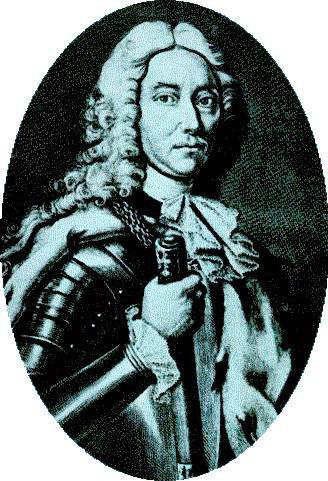 - Dmitry Cantemir, Moldavian ruler and ally of Peter the Great
- Dmitry Cantemir, Moldavian ruler and ally of Peter the GreatSixty-three years after Kantemir passed into Russian citizenship, in 1774, the Kyuchuk-Kaynardzhiysky treaty was concluded, which ended the next Russian-Turkish war and provided for the Moldovan principality to be transferred from the Ottoman empire of the Russian state to the protectorate. So began the history of Moldova as part of Russia. In the 1812 year, in accordance with the Peace of Bucharest, the lands of Bessarabia became part of Russia.
Thus, the Russian Empire played a key role in liberating the Moldovans from the Turkish yoke and in preserving the Moldovan Orthodox and national identity. The Moldavian writer and Orthodox priest Alexei Mateevich emphasized that the annexation of the Bessarabian lands to the Russian Empire practically saved the Moldovan language and Orthodox culture. In particular, this was manifested in the fact that it was the Old Slavonic language that was used in Moldova as a language of worship for a long time, almost all Moldavian chronicles and decrees of princes were written in Cyrillic. This testified, first of all, about Moldova’s belonging to the Russian-Slavic world.
Many immigrants from Moldova were integrated into the Russian political, military, and cultural elite, took up serious positions at the imperial court. Note that in the neighboring Wallachia, which later became sovereign Romania, the pro-Western trend prevailed. As a result, despite the fact that the overwhelming majority of Romanians also professed Orthodoxy, the elite of the Romanian state turned out to be to a large extent German-Austrian in its origin. Representatives of the German Hohenzollern dynasty, who conducted a pro-Western and anti-Russian policy, were invited to the Romanian throne. So, if the Moldavian language used the Cyrillic script, then the Roman alphabet was established in Romania, which, despite the Orthodox religion of the majority of the Vlachs, contributed to the assertion of ideas about Romania’s belonging to the “Latin” world.
At the same time, the Moldovan lands, which fell under the sovereignty of the Russian Empire, developed much more successfully and dynamically than neighboring Romania. Unlike Romania, where national minorities were suppressed, in the Russian Empire people from the Bessarabian province received all the rights and obligations of Russian citizens. Chisinau population from 1811 to 1861 has grown sixteen times, and the city itself has turned from a rural-type settlement into a developed economic and cultural center. At the same time, a trend was already emerging - in the cities the Russian, German, Jewish population was concentrated, in the countryside - Moldovans (Vlachs), Bulgarians, Gagauz. There was a significant percentage of Rusyns who were not separated from other representatives of the Russian nation. The place of compact settlement of the Rusyns in the Bessarabian province was the Khotyn district. When, in the 1918 year, after the collapse of the Russian Empire, Bessarabia was annexed by Romania that had long claimed it, it was in Khotyn Uyezd that the famous Khotyn uprising of the local population broke out against the Romanian authorities. More than 30 thousand people took part in the Khotyn uprising, and after its suppression over 50 thousands of Bessarabians — mostly Rusins by nationality — left their native land and joined the Red Army detachments.
When modern Moldovan politicians talk about the imaginary occupation of Moldova by Russia and then by the Soviet Union, this is not so much demonstrating the blatant ignorance of the history of their own country, as defiantly abandoning Moldovan and Moldavian culture from the Orthodox-Byzantine tradition, the main carrier of which for the past centuries It turns out the Russian world.
The collapse of the Soviet Union at the end of 1980's - 1991's. in many respects it was based on the so-called "National renaissance" in the union republics. Moldova did not escape this fate, which was considered by the West as one of the weakest links of the Soviet statehood.
This was explained by the fact that the Moldavian SSR, firstly, occupied a frontier position in the extreme south-west of the Soviet state, and secondly, it was adjacent to Romania — an ethnoculturally related state that kept a pro-Western, “Latin” line in politics and culture. The Romanian state has never concealed its anti-Russian orientation, and even when Romania belonged to the “Soviet bloc,” relations between the Soviet Union and the Socialist Republic of Romania were much cooler than between the Union and many other socialist countries of Eastern Europe. The reason for anti-Russian sentiment in Romania is not only revanchism, the desire to take back the lands of Bessarabia and Northern Bucovina, but also the myth cultivated over the past two centuries about the belonging of the Romanian nation to Western culture, brought to ordinary Romanians by promoting opposition to "cultural Romania" and "eastern Barbarians "threatening Romanian statehood and culture.
The anti-Soviet movement in the Moldavian SSR acquired Romanian and Russophobic features from the very beginning, which turned out to be anti-Moldavian as well. While in the case of Ukraine and Belarus, the West has historically always pursued a policy of separation from Russia, focusing on the differences between Great Russians (Russians), Little Russians (Ukrainians) and Belarusians, while in the case of Moldova and Romania, the West, on the contrary, has oriented Moldovan nationalists towards the recognition of Moldovans part of the romanian people. Thus, the nationalists, who formally fought against the “Russian occupation” and for the interests of Moldova, in fact advocated the interests of Romania, denying the Moldovans the right to be called an independent people. Thus, the courses “Stories of Romanians” were introduced in post-Soviet Moldova, the Romanian language was proclaimed the state language of the country by a decision of the Constitutional Court, although the Constitution is Moldovan as the state language. The latter, in order to maximize the “Romanization”, was translated into the Latin alphabet - for the greatest rejection of the young generations of Moldovans from the cultural influence of the Russian world. Similarly, in the religious sphere, the Romanian Orthodox Church seeks to oust from the territory of Moldova the diocese of the Moscow Patriarchate, although the latter still prevail in the country.
By the way, in Romania itself, the presence of the Moldavian ethnos and Moldavian culture is utterly suppressed. Despite the fact that historically there were two states - Wallachia and Moldova, which implies at least the existence of certain differences between their population in cultural terms, Moldovans in Romania are considered solely as part of the Romanian people, without any right to their own cultural tradition. At the same time, naturally, the Bucharest Romanian elite will never consider Chisinau Moldavians as peers in terms of socio-cultural status, and even in the case of a merger with Romania, Moldovans will be doomed to the position of "second-class Romanians", while Romania itself the present time remains the backyard of Europe.
The history of Moldova’s gaining state sovereignty ended, as it should have been, with a wave of violence and an armed conflict in a region densely populated by the Russian population. Back in 1988, a wave of anti-Soviet and anti-Russian rallies was held in the Moldavian SSR. “Russians — beyond the Dniester; Jews — into the Dniester!” Shouted placards of Moldovan nationalists. The mood of the crowd, in which the main role was played by marginal elements, who had recently moved to the cities from the countryside with a predominantly Moldovan population, was strongly encouraged by representatives of the Moldovan intelligentsia. Moldovan "writers" raised by the Soviet Union, who received free education and a lot of preferences thanks to the USSR, including membership in the Writers' Union, the possibility of a large-circulation publication of their own creations, the artistic value of many of which raises significant questions, in an instant turned out to be ardent enemies of Soviet statehood and personified Russian with it people. It was the Moldovan intelligentsia who developed projects in the state language, which envisaged the proclamation of the Moldavian language as the only official language of the Moldavian SSR (the next stage would be the substitution of concepts and the renaming of the Moldavian language to “Romanian”).
In their nationalistic aspirations, Moldovan politicians forgot that the borders of the Moldavian SSR were outlined during the Soviet period and, accordingly, differed in considerable conventionality. In turn, the Moldavian SSR was also created on the basis of the Bessarabian province of the Russian empire - that is, the administrative formation of the “imperial state”, in which the territorial division did not carry a national background. Therefore, an attempt to build a national state of Moldovans on lands, many of which never belonged to them and were not inhabited by Moldovans, seemed to be a provocation of the conflict rather than a desire for national justice. This is what happened.
After all, the eastern, adjacent to the Dniester, regions of the republic were inhabited mainly by the Russian-Ukrainian population, as well as by the part of Moldovans who spoke Russian and were almost completely integrated into the Russian world. On the other hand, a number of areas in the south of the Moldavian SSR were inhabited by Gagauz people - a Turkic-speaking people, formed here in the Middle Ages and naturally consider themselves to be the masters of their territory. The Gagauzians profess Orthodoxy and in a geopolitical respect to Russia, because they understand that the increasing influence of Moldova will lead to inevitable forced assimilation, “Romanization” of the Gagauz population with the prospect of losing national cultural identity.
The leaders of the Moldavian nationalists, who did not want to reckon with the multinational composition of the population of the Moldavian SSR, as already mentioned above, since 1988, have provoked interethnic clashes on the territory of the republic. 23 June 1990, the Supreme Council of the Moldavian SSR, which by this time was controlled by Romanians, adopted a decree according to which the lands of Bessarabia and Northern Bukovina were recognized to be illegally seized from Romania by the territories. Thus, in fact, the course was taken towards Moldova’s accession to the neighboring Romanian state, which all Russian-speaking residents of the country, as well as that part of Moldovans who did not identify with the Romanians and did not intend to abandon their Moldovan identity, negatively perceived.
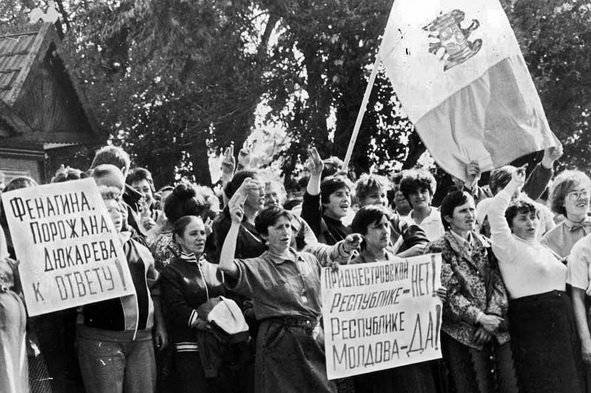
Naturally, the Romanian policy of Chisinau met with a backlash in Transnistria and Gagauzia. In October 1990 of the year, in response to the creation of the Supreme Council of Gagauzia, the Moldovan authorities undertook the “Hike to Gagauzia”. From the Moldovan cities and bus villages to Comrat - the Gagauz capital - about 50 thousands of volunteers headed for the Moldovans. In response, the Supreme Council of Gagauzia mobilized the local population, and volunteers from Transnistrian regions came to the aid of the Gagauz. For a small confrontation did not result in a full-scale civil war. According to its results, the Republic of Gagauzia was proclaimed, which existed for four years as an unrecognized state association, and since 1994, formally exists within Moldova as an autonomous entity. Until now, the Gagauzians to Russia - for example, a large part of the population of Gagauzia in the referendum spoke in favor of joining the Customs Union and for leaving the Moldovan state in the event of unification of the latter with Romania.
The aspiration of Moldova to “establish order” on the territory of Transnistrian regions led to more dramatic consequences. 2 September 1990 was declared the Transnistrian Moldavian Soviet Socialist Republic (PMSSR) as part of the Soviet Union. This “initiative” of the Transnistrian population caused a sharply negative reaction from the Chisinau authorities, and the Soviet leaders in Moscow also took it no less negatively. Gorbachev and his team, who were preparing the USSR for the final collapse, were worried about people's activity in Transnistria that was not in their plans.
Further escalation of the Transnistrian conflict was caused by the collapse of the Soviet state and the proclamation of the state sovereignty of Moldova. Throughout 1991-1992. relations between Chisinau and Tiraspol, the capital of the Pridnestrovskaia Moldavskaia Respublika, gradually deteriorated. Clashes between Moldovan police subordinate to official Chisinau and Transdniestrian warriors occurred regularly. From 1 March to 21 July 1992, the armed conflict between the Pridnestrovian Moldavian Republic and Moldova continued, ending in a truce. In the Transnistrian war, on the side of the Transdniestrian Moldavian Republic, both local residents and quite numerous volunteers from Russia — Cossacks, representatives of nationalist organizations, and former military personnel — took part. This conflict, in many respects, resembled current events in Ukraine, although even now it already looks much smaller in terms of casualties and destructions.
The “freezing” of the conflict, however, became possible also thanks to the direct intervention of the Russian armed forces — the 14 Army stationed in the region. The Russian army helped Transnistrian guards and Cossacks repel the attacks of Moldovan armed units, which led to the assertions of the then Moldovan President Mircea Snegur about the state of war with Russia, in which his country is located in Transnistria. However, at the beginning of the 1990's. The West has not yet intervened openly in the conflict, because it was afraid of losing ties with the Boris Yeltsin regime that was beneficial to him. So the existence of the Pridnestrovian Moldavian Republic and its support from Russia were partially “closed eyes”.
As for sovereign Moldova, its entire post-Soviet history appears to be a complete political, economic, and cultural fiasco. Despite the “long-awaited liberation from the invaders”, as Moldovan nationalists called the proclamation of sovereignty, the country failed to achieve either real economic independence, no welfare in the social sphere, or the development of culture and science. On the contrary, Moldova has become one of the poorest and most backward states, not only of modern Europe, but also of the post-Soviet space. A significant part of Moldovan citizens, up to the present, is located on the territory of the Russian Federation or periodically leaves here in search of work. Moldovans come mainly from Russian construction sites, and partly as seasonal workers in the agricultural sector, since there is practically no possibility of finding a job and getting more or less normal money for work in their home country.
At present, Moldova is the leader in Europe in terms of the amount of financial resources allocated to the country by its citizens who work outside the country. Many Moldovan families exist at the expense of the labor of their representatives in Russia and other countries as guest workers. Ironically, yesterday's advocates of expelling Russian and Russian-speaking people from the territory of the republic turned out to be incapable of building a developed sovereign state and soon pulled themselves to Russia, after leaving the Russian-speaking, to occupy vacancies in the field of hard and low-skilled labor.
However, despite the fact that 22 has passed since the armed stage of the conflict in Transnistria, it can hardly be considered solved. Finding a conflict in the “freezing” stage implies the possibility of its renewal at any moment. The latter can happen, first of all, in case of a weakening of Russia's position in the region against the background of the resumption of Moldovan expansion. The political crisis of the autumn 2013 - 2014. in Ukraine, which ended in civil war and the actual disintegration of this post-Soviet state, is a very disturbing factor for Transnistria and Gagauzia. Undisclosed expansion of the West in the region, relying first on the Moldovan, and now on the Kiev government, will inevitably entail attempts to destroy the pro-Russian Transnistrian statehood, as well as the real political autonomy of Gagauzia. The residents of Transdniestria and Gagauzia understand this perfectly well. It is not by chance that from the very beginning of the confrontation in Ukraine, Transdniestrians and Gagauz were on the side of opponents of Euromaidan, and the “Bashkan” (head) of Gagauzia, Mikhail Formuzan, officially invited the “Berkut” fighters for treatment in Gagauz sanatoriums. Today, volunteers from Transnistria are actively involved in defending the territory of New Russia against the aggression of the Kiev regime.
The final ousting of Russia from South-Eastern Europe, the deprivation of its reference points in the region is one of the long-standing tasks of the United States and its European satellites represented by Romania. The coming to power in Kiev of the regime controlled by the United States significantly changes the current balance of forces in the region over the past twenty years. Ukraine unfriendly to Russia can be an ally of Moldova, at least in terms of blocking the approaches to Transnistria and Gagauzia. It can easily be assumed that after the defeat of the militias in Novorossia, Moldova will attack the Transnistrian republic, “pacify” Gagauzia with the change of its political regime. Therefore, the security of the Transnistrian state is now becoming one of the strategic tasks for the Russian authorities - of course, if it wants to preserve Russia's geopolitical influence in the region.
On the other hand, the return of Moldavia and the Moldavian people to the orbit of Russian political and cultural influence is no less significant for Russia. Moreover, this is not an expansion, but a return of historical justice and protection of interests, including those of the Moldavian people, who for centuries possessed their own identity and did not suffer from the “Latinizing” Romania.
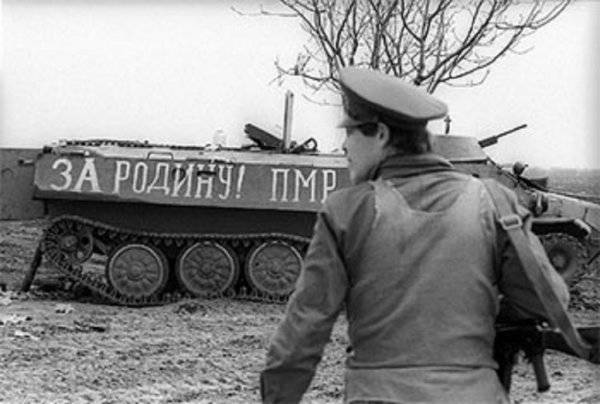
Information